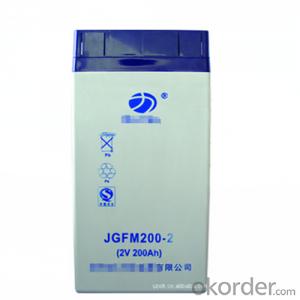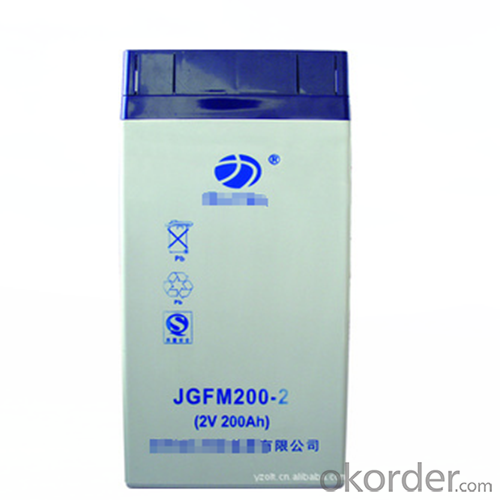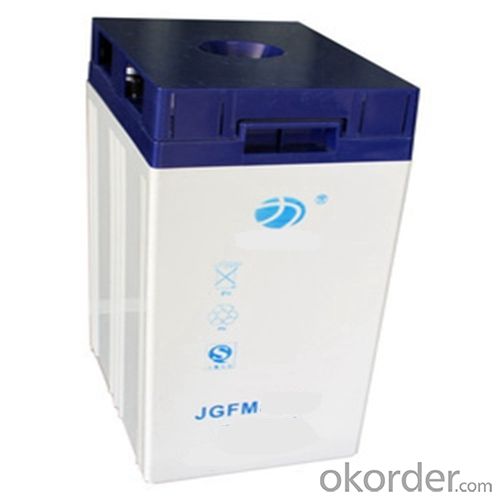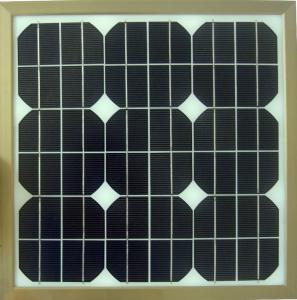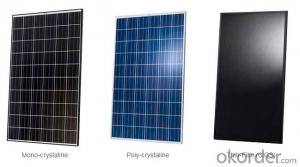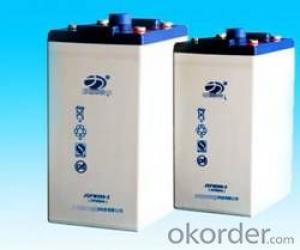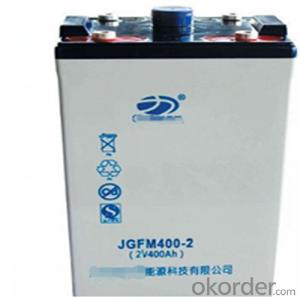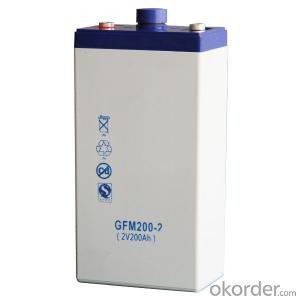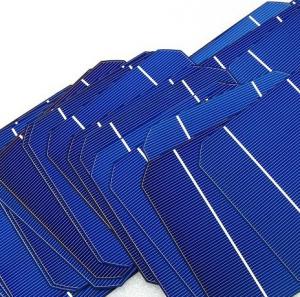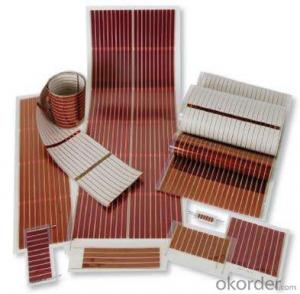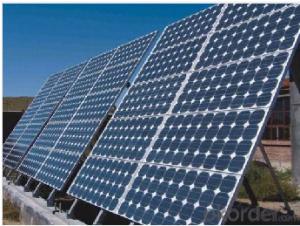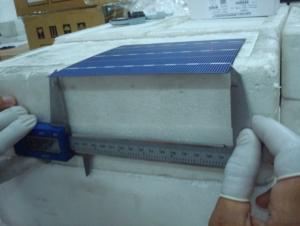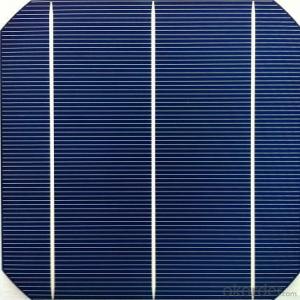Spectrolab Solar Cells Colloid Storage Battery JGFM Series 2V 200AH
- Loading Port:
- China main port
- Payment Terms:
- TT OR LC
- Min Order Qty:
- 1 pc
- Supply Capability:
- 1000000 pc/month
OKorder Service Pledge
OKorder Financial Service
You Might Also Like
Structure of Product Descrtiption
What is the product?
· Precision explosion relief valve shall be adopted
· Advanced wrapping technology and assembly technology
· Designed life is fifteen years,excellent performance of battery in low temperature and superiority in consistence and stability
· Can be used at vertical or horizontal orientation
· Balanced design for both floating and cyclic operation
· Low self-discharge rate and long shelf life
· Connecting terminal adopts stainless steel bolt,thus it has the characteristics of high strength and non-deforming
· Design with patented corrosion resisting alloy and thickened plate
What is the purpose of the product?
· Data Centre (High Rate UPS)
· Telecommunication
· Banks & Financial Centre
· Hospital& Testing Laboratories
· Power Generation Plants
· High Power Backup Supply
· Design with patented corrosion resisting alloy and thickened plate
What advantages do products have ?
· Stable quality&high reliability
· Sealed construction
· Environmentally friendly
· Maintenance-free operation
· Low pressure venting system
· Heavy duty grid
· Low self discharge
Main feature of the product:
*safety and reliable
*environmental friendly and fast delivery
*low self diacharge
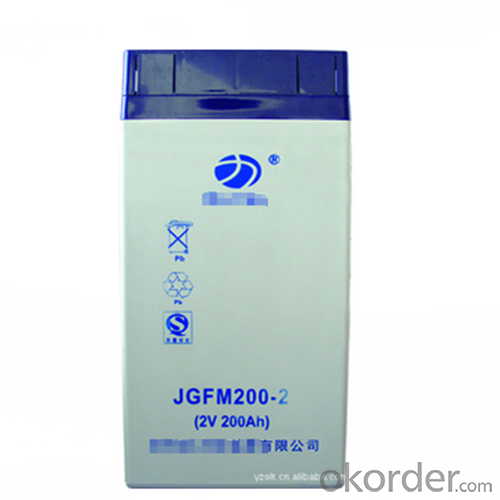
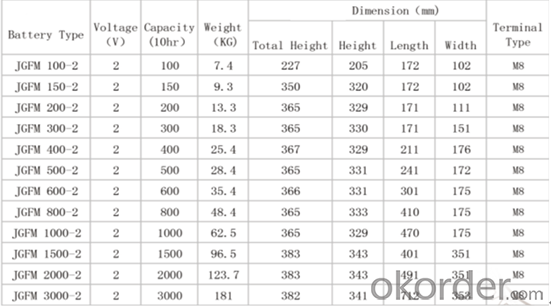
FAQ:
Q: What’s price per watt?
A: It’s depends on the quantity, delivery date and payment terms of the order. We can talk further about the detail price issue. Our products is high quality with lower price level.
Q:Can you tell me the parameter of your solar panels?
A:We have different series of cells with different power output, both from c-si to a-si. Please take our specification sheet for your reference.
Q:Is it reliable in the aspect of safety ?
A:It is made of aluminum film packing, after the authoritative test charge, discharge, short circuit, extrusion, acupuncture, drop, heating, such as performance, battery is not on fire, no explosion
- Q: How do solar cells generate electricity?
- Solar cells generate electricity through the photovoltaic effect, where the cells convert sunlight directly into electrical energy. The cells are made of semiconducting materials, usually silicon, which absorb photons from the sunlight. These photons excite the electrons in the material, causing them to break free from their atoms and create an electric current. This current is then collected and used to power various devices or stored in batteries for later use.
- Q: Can solar cells be used for powering medical devices?
- Yes, solar cells can be used for powering medical devices. Solar cells convert sunlight into electricity, which can be utilized to power various medical devices such as portable monitors, insulin pumps, hearing aids, and even prosthetic limbs. This renewable energy source allows for greater portability and independence, especially in remote or resource-limited areas where access to electricity may be limited.
- Q: What are the advantages and disadvantages of solar panels and diodes?
- I first connected to a positive and negative, and then in the positive series more than one, is not it can be achieved to prevent short circuit, to prevent the return can also play a rectifier 3 role?
- Q: How do solar cells perform in high altitude environments?
- Solar cells perform better in high altitude environments due to several factors. Firstly, at higher altitudes, there is less atmospheric interference, resulting in reduced scattering and absorption of sunlight. This allows solar cells to receive more direct and intense sunlight, increasing their efficiency. Secondly, the lower temperatures at higher altitudes help solar cells operate more efficiently as they generate less heat, reducing the risk of overheating. Finally, the thinner air at higher altitudes allows for better heat dissipation, further enhancing the performance and lifespan of solar cells. Therefore, solar cells are generally more effective and efficient in high altitude environments.
- Q: How do solar cells perform in areas with high levels of insect activity?
- Solar cells can still perform effectively in areas with high levels of insect activity. While insects may occasionally land on the surface of the solar panels, their presence does not significantly impact the overall performance or efficiency of the cells. Regular cleaning and maintenance can help ensure optimal function of the solar panels even in areas with high insect activity.
- Q: How do solar cells perform in areas with high levels of industrial emissions?
- Solar cells can perform less efficiently in areas with high levels of industrial emissions due to the presence of air pollutants. These emissions can create a layer of grime on the surface of solar panels, reducing their ability to absorb sunlight. Additionally, air pollution can scatter and block sunlight, further reducing the overall performance of solar cells in such areas. Regular cleaning and maintenance of solar panels may help mitigate the impact of industrial emissions on their performance.
- Q: Is it complicated to make a solar cell work well?
- My chemistry teacher told me that as long as you have enough knowledge, you can make a solar cell work very well.
- Q: How do solar cells perform in high-altitude locations?
- Solar cells perform well in high-altitude locations due to several factors. Firstly, at higher altitudes, there is less atmospheric interference such as dust, pollution, and cloud cover, which allows for a more direct and intense sunlight exposure. This leads to increased solar energy absorption and higher power output from the solar cells. Additionally, the thinner atmosphere at high altitudes reduces the scattering of sunlight, resulting in improved efficiency of solar cells. Therefore, solar cells can be highly efficient and productive in high-altitude locations, making them an ideal renewable energy solution in such areas.
- Q: Can solar cells be used in educational institutions?
- Yes, solar cells can be used in educational institutions. They offer a hands-on approach to teaching students about renewable energy and the importance of sustainable practices. By installing solar panels on rooftops or in designated areas, educational institutions can generate clean energy, reduce their carbon footprint, and save on electricity costs. Additionally, incorporating solar cells into the curriculum allows students to understand the science, technology, and environmental aspects of solar energy, fostering a greater awareness and understanding of renewable energy sources.
- Q: What is the expected degradation rate of a solar cell?
- The expected degradation rate of a solar cell can vary depending on various factors such as the quality of materials used, manufacturing processes, environmental conditions, and maintenance practices. However, on average, a well-designed and properly maintained solar cell can experience an annual degradation rate of around 0.5% to 1%. This means that over time, the solar cell's efficiency may decrease by 0.5% to 1% per year.
Send your message to us
Spectrolab Solar Cells Colloid Storage Battery JGFM Series 2V 200AH
- Loading Port:
- China main port
- Payment Terms:
- TT OR LC
- Min Order Qty:
- 1 pc
- Supply Capability:
- 1000000 pc/month
OKorder Service Pledge
OKorder Financial Service
Similar products
Hot products
Hot Searches
Related keywords
